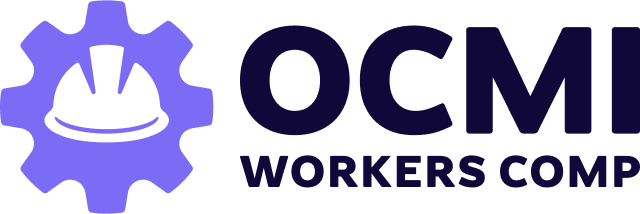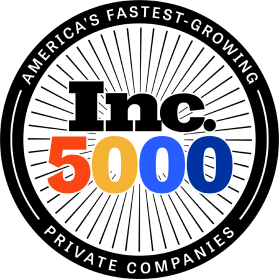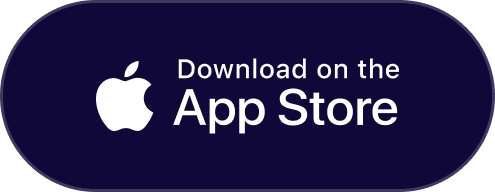If you’re an HR manager or payroll administrator, you may be well-versed in the importance of compliance within your organization. When employers violate laws that determine how their employees are paid, they could face hefty penalties.
Despite how crucial it is for your business, compliance can be incredibly complicated. Federal, state, and local regulations can be tricky to navigate. Not only do they vary depending on your location and industry, but they also tend to change frequently.
Innovative solutions to compliance issues are becoming increasingly popular, which is hugely beneficial to companies of all sizes. Let’s dive into the importance of compliance in workers’ compensation payroll and how innovative new features are enhancing compliance.
Importance of Compliance in Workers’ Comp Payroll
Payroll compliance is crucial for every organization—no matter how many employees you have. While fines for noncompliance could be detrimental to your company, the importance of remaining compliant extends far beyond potential monetary penalties.
Compliance in workers’ comp payroll is essential for protecting employees.
There are different laws in place that help ensure equal pay, solidify minimum wage and overtime rates, and ensure employees have the workers’ comp coverage they need. Staying compliant with rules and regulations also means employees get paid on time, taxes are filed correctly, and payroll records are clear and concise.
Noncompliance with state and federal laws can affect the entire organization. While it likely means getting hit with penalties, fines, and potential legal expenses, it can also result in decreased employee morale. An employee’s satisfaction—or dissatisfaction—with their employer can have a major impact on company culture.
Because of how impactful compliance is in the workplace, looking for innovative ways to improve it is essential to the success of the company.
Innovative Features in Modern Payroll Solutions
Modern payroll solutions can make a huge difference in how employees are paid. Noncompliance with state and federal laws may not necessarily be intentional—in many cases, mistakes simply happen while conducting payroll manually.
Utilizing payroll software is crucial for any business that wants to maintain compliance. With a modern payroll system, both the employer and employee can access payroll through a user-friendly app. This makes clocking in and out, choosing benefits packages, and accessing workers’ compensation information simple and straightforward.
In addition to accessibility, benefits management, and time tracking, automation is one of the most important features of a modern payroll system. An automated system will adjust payment according to time worked, overtime, bonuses, commission, and deductions.
How These Features Enhance Compliance
Modern payroll features like time tracking and automation help ensure payroll is completed accurately and on-time, which ultimately enhances compliance with state and federal regulations. The easier it is for employees to access their information and clock in and out of work, the easier it will be to pay for those hours. When all an employee’s data is stored in one place, employers will experience a more streamlined payroll process.
Ultimately, a streamlined payroll system—with everything accessible in one place—means fewer errors, faster payment, and a smoother process overall.
Role of PEO Services in Providing Compliance Solutions
Professional employer organizations (PEOs) offer HR services for businesses that are ready to outsource their administrative tasks. Working with a PEO allows companies to focus their time and energy on building relationships with their employees and strategizing for business growth.
PEO services include payroll and tax filing, workers’ compensation, risk management, and comprehensive support. Partnering with a PEO means you’ll have experts available to assess potential compliance issues—from payroll to safety regulations—and help determine possible solutions. When you partner with a PEO you also have access to comprehensive support. No matter what questions you may have, a specialist will be available to help guide you through the process.
Working with a PEO like OCMI Workers’ Comp allows employers to streamline their payroll system—improving accuracy, timeliness, and compliance.
As AI-driven automation transforms payroll, businesses can expect improved accuracy, tax compliance, and fraud detection. Enhanced cybersecurity measures will also play a key role in protecting sensitive employee data.
Staying up to date with the latest workers’ comp payroll innovations is essential for compliance and business success. OCMI Workers’ Comp is here to help.
Ensure your business’s security—get a quote and contact us here today.
As a payroll administrator or HR manager, you know how important payroll documentation is. Accurate payroll reporting is crucial when it comes to employee satisfaction, engagement, and retention.
Despite how essential it is to both your business and the people who work there, ensuring accuracy when reporting payroll can be difficult no matter how many employees you have. There are some best practices to keep in mind when documenting workers’ comp payroll to ensure compliance and help the process run smoothly. Let’s dive into effective payroll documentation and how to implement it in your organization.
Importance of Accurate Documentation in Workers’ Comp Payroll
Accurate payroll documentation is imperative for many reasons—from compliance with state and federal laws to employee satisfaction. If you’re in charge of paying people, it must be done correctly. There are many rules and regulations when it comes to payroll, and remaining compliant with those laws requires accurate payroll processing.
The culture of your workplace depends largely on the attitude and satisfaction of your employees. If your workers aren’t paid accurately or on time, company culture will likely suffer. As an employer, your employees should be able to trust that they’ll make the pay promised to them without having to double-check the math or ensure their hours are correct.
Additionally, proper documentation of payroll is necessary to keep track of business expenses. Payroll adds up, and it’s often the biggest expense an organization has. When payroll isn’t documented correctly, it creates discrepancies and disorganization within your business.
Key Elements of Effective Payroll Documentation
Effective payroll documentation relies on several key elements from the way an employee is classified to the benefits and tax deductions they receive. Employee classification will vary depending on whether they’re a full or part-time employee, or a contracted worker. These classifications are used to help ensure companies remain compliant with rules and regulations.
Employee benefits—like workers’ compensation insurance—and tax deductions also play a major role in effective payroll documentation.
Best Practices for Payroll Reporting
With so much to consider when it comes to payroll reporting, adhering to best practices can help simplify the process.
Classify Employees Correctly
First and foremost, correctly classifying your employees is crucial for accurate payroll reporting. This will determine the type of worker they are and ultimately the benefits and tax deductions they receive.
Create a Payroll Schedule
Whether you have one or one hundred employees, staying organized can be challenging. Creating and maintaining a payroll schedule is a great way to stay on top of payments and keep your employees satisfied.
Document and Maintain Records
Keep track of everything—from your employees’ personal information to payroll records. Staying up-to-date is crucial for remaining compliant with state and federal laws.
Automate Payroll
The easiest way to ensure efficient payroll processing is to automate your system. Professional employer organizations (PEOs) use payroll software to help ensure accuracy, timeliness, and compliance with the rules and regulations for your specific state and industry.
Preparing for Audits
For payroll administrators and HR managers, preparing for audit season can feel somewhat overwhelming. Before the government performs an official audit, however, it’s a good idea to internally check that payroll has been done accurately.
Preparation for an audit may look like reviewing all hours worked by each employee and ensuring what they were paid for matches the number of hours they logged. Paid time off, workers’ compensation, and tax deductions are also important to double-check. Keep bonuses and back pay in mind as well when checking the accuracy of your payroll.
When you work with a PEO, you won’t need to worry about payroll audits. The PEO is in charge of handling payroll processes and ensuring that it’s performed correctly.
Ensure Payroll Accuracy & Compliance with OCMI Workers’ Comp
Maintaining accurate and compliant payroll documentation is key to protecting your business and employees. While best practices help, partnering with a trusted PEO provides expert support to simplify the process and reduce risk.
Let OCMI Workers’ Comp handle the complexities so you can focus on growing your business.
Act now and get a quote to keep your business safe here.




